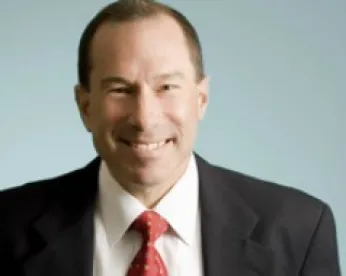In a move he says will improve the quality of health care and cut health system costs, FCC Chairman Julius Genachowski announced the Commission will work toward implementing recommendations proposed by the mHealth Task Force,[1] a consortium of wireless healthcare technology experts created by the FCC to facilitate broader adoption of mobile health (mHealth) technologies.[2] Chairman Genachowski said the FCC will take the following actions based on the mHealth Task Force Report: work with industry and federal partners to achieve the Task Force’s goal that mHealth become a medical best practice by 2017; renew the FCC’s search for a Health Care Director; develop outreach programs for industry stakeholders; work with international counterparts to make spectrum available for wireless medical technologies and harmonize international mHealth spectrum; consider action that would streamline the rules governing the use of experimental wireless health care devices; and consider rules to reform and modernize the Rural Health Care (RHC) Program.
What is mHealth Technology?
According to the mHealth Task Force, mHealth encompasses the electronic exchange of data, images and video that aid in the practice of medicine as well as the use of mobile networks, devices and applications to support those practices.[3] Examples of new wireless technologies in the medical field include Medical Body Area Network (MBAN) sensors that allow doctors to remotely monitor patients’ vital signs, mobile diagnostic imaging applications that give physicians digital access to medical images, medical implant devices that help restore sensation and mobility to paralyzed limbs, and general health software applications that allow patients to upload and download their health information at any time. In addition to these technologies, the use of electronic health records and broadband-enabled infrastructures will allow healthcare providers to digitally share patient health information with other providers. A Brookings Institution analysis found that real-time care via remote monitoring technologies could save as much as $197 billion in healthcare costs over the next 25 years.[4]
FCC’s Role in Addressing mHealth Technology and Action to Date
Recognizing both the benefits of mHealth technology and the barriers to its adoption, the FCC has recently addressed the issue of wireless medical technology in several ways.
In March 2010, the FCC unveiled the National Broadband Plan, which, among other things, urged Congress and the Secretary of Health and Human Services to develop strategies to facilitate the use and development of health information technology and called for collaboration with the FDA to develop a regulatory approach to mobile health technologies. The Broadband Plan’s proposed partnership resulted in a Memorandum of Understanding between the two agencies to work together to ensure the safety of wireless medical devices, promote investment in these technologies, and streamline the regulatory process over mHealth solutions.[5] In 2011, the FDA issued draft guidelines for how it planned to regulate mobile medical applications.[6] Thereafter, Congress tasked HHS – in collaboration with the FDA, FCC and National Coordinator for Health Information Technology – to present a report containing a proposed strategy and recommendations for regulating the health information technology market.[7]
In addition to its collaboration with the FDA, the FCC took two additional steps to facilitate adoption of mobile and wireless health technologies. In November 2011, it dedicated spectrum for Medical Micropower Networks (MMNs), which are devices implanted in the body that are used to provide functional electric stimulation to activate and monitor nerves and muscles. Less than a year later, the Commission adopted rules to allocate spectrum for MBAN devices, making the United States the first country to set aside spectrum for this technology and opening the door for doctors to remotely monitor patients’ vital signs outside of the hospital setting.[8]
Finally, Chairman Genachowski announced that the FCC plans to permit greater access to spectrum and create experimental licenses for medical and other research that would make it easier to test new wireless medical devices.[9] In addition to working with the FDA on these new research licenses, the FCC also proposed to create “innovation zone licenses” to allow pre-approved spectrum use experimentation in specified locations.[10]
mHealth Task Force’s Recommendations
Taking its lead from Chairman Genachowski, who tasked them with developing the “next steps,” the mHealth Task Force conducted research and met with industry stakeholders in order to identify ways to promote the broad adoption of mobile health technologies.[11] The goals and recommendations, which were released September 24, 2012, generally focused on fostering innovation, increasing agency collaboration and expanding broadband access for healthcare.[12]
First, the Task Force recommended that the FCC continue to play a leadership role in advancing mobile health adoption. The Report urged the FCC to appoint a new Health Care Director to serve as a liaison with other federal agencies and stakeholders with an interest in moving toward improving mobile healthcare delivery. In order to educate the public about mHealth technologies, the Report also asked the FCC to improve outreach to non-profits, research institutions and small businesses, and to launch a healthcare website that could be a one-stop-shop for constituents interested in learning more about the initiatives and policies in this field. The Task Force also requested that the FCC continue to seek public input on mHealth adoption by establishing a formal working group dedicated to this area.
Second, the Task Force urged other federal agencies to increase collaboration to promote innovation, protect patient safety and avoid regulatory duplication. The group noted that Congress mandated inter-agency cooperation on mHealth issues via the FDA Safety and Innovation Act. It suggested that the FCC work with a variety of partners – including the FDA, NIH, Centers for Medicare and Medicaid Services (CMS) and Office of the National Coordinator for Health (ONC) – to share data, set standards for the use of electronic health records, and promote the adoption of secure health messaging and communications standards. These agencies were also encouraged to standardize the mHealth nomenclature, which is currently used inconsistently across agency lines, resulting in barriers to collaboration and public education.
Third, the Report asked the FCC to build on the RHC and Lifeline programs. The RHC Program was established in 2006 to encourage healthcare providers in rural communities to use broadband networking services. In November 2007, the FCC selected 69 entities to participate in a Pilot Program that helped offset the cost of telecommunications services for providers.[13] In addressing the RHC Program, the mHealth Task Force recommended that the FCC continue to explore whether wireless technology can be supported in the RHC Program. It further recommended that the FCC continue to allow healthcare providers to apply for the Program as a consortium, but to expand this ability to consortium applications for geographically dispersed healthcare sites as well. As for the Lifeline Program, the Task Force encouraged the FCC to continue on its path to expanding the Program to support broadband service for low-income consumers and to consider adding healthcare delivery as a program goal.
Fourth, the Task Force noted that the FCC should continue its efforts to increase capacity, reliability, interoperability and radiofrequency (RF) safety of mHealth technologies. Noting the anticipated increase in demand for wireless spectrum, the Task Force stated that the FCC should make more licensed spectrum available for mobile broadband. It also encouraged the FCC to continue discussions with international counterparts to facilitate international MBAN allocation so consumers can safely use wireless mHealth devices across borders. Additionally, the Report asked the FCC to continue to encourage the creation of wireless test beds and experimental licensing programs. The Task Force also urged the FCC to gather industry input on how to facilitate access to and transmission of medical imaging, to assess RF exposure levels of medical devices, and to make recommendations on how to address the switch from plain-old-telephone system (POTS) modem connections to Voice over Internet Protocol (VoIP), broadband and wireless providers.
Finally, the Task Force encouraged industry stakeholders to support investment, innovation and job creation in the mHealth sector. The Task Force recommended the continued development of mHealth solutions and access to secure, trusted application interfaces. Industry stakeholders were also asked to use the mHealth Task Force as a model for future collaborative opportunities.
FCC Implementation Plan
According to Chairman Genachowski’s statement and a Commission memorandum, the FCC plans to implement many of the Commission-specific recommendations in the mHealth Task Force’s Report and will review how to address the Report’s other recommendations in the future.[14] Notably, the Commission is focused on working with industry and federal partners to make mHealth a medical best practice by 2017. A renewed search for a Health Care Director is also in place, as are plans to develop outreach programs for industry stakeholders.
Regarding the Report’s spectrum allocation recommendations, the Commission plans to continue reaching out to international counterparts in order to encourage them to make spectrum available for MBANs. The International Bureau will spearhead the effort toward mHealth spectrum harmonization, which already includes outreach to regulators in Mexico and Europe. Also, the FCC will consider an order by the end of this year that will streamline the experimental licensing rules and encourage the creation of wireless “test beds” to permit testing of mHealth technologies.
Finally, the Commission is considering an order by the end of this year to reform and modernize the RHC Program. Specifically, the order will consider implementing the Task Force’s recommendation to expand the consortium application process to healthcare facilities. As recommended, it will also collect more data on broadband applications from RHC Program participants in order to enable more targeted support for telemedicine.
Conclusion
Internet and wireless technologies are revolutionizing the healthcare system and the FCC is working with other agencies and stakeholders to create a regulatory framework that makes sense for this rapidly growing sector. The Commission appears ready to implement at least some of the recommendations of the mHealth Task Force immediately and study the remainder for long-term adoption.
*Also contributed to by Kara Romagnino




 />i
/>i

